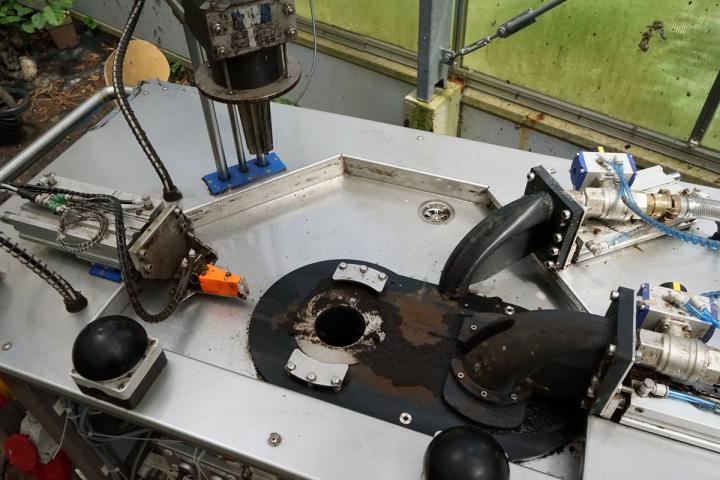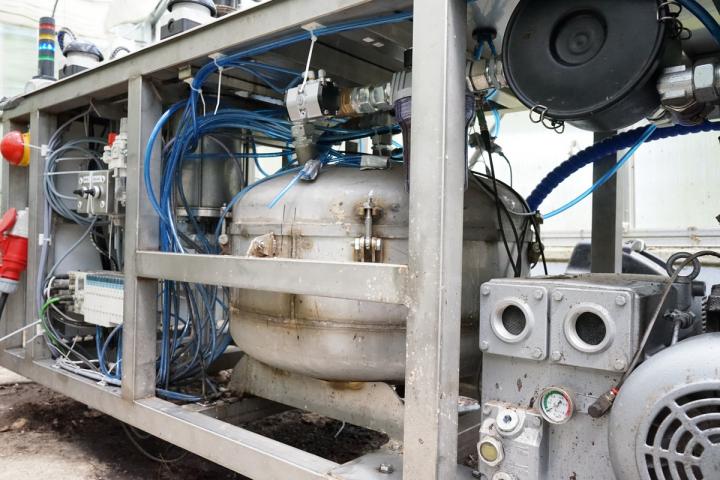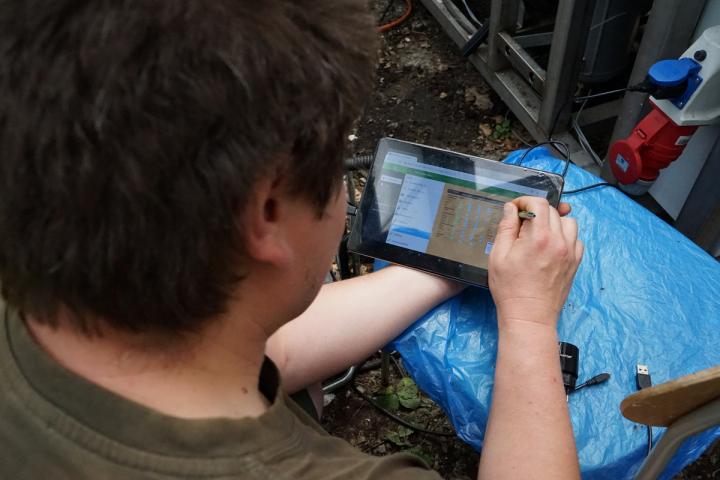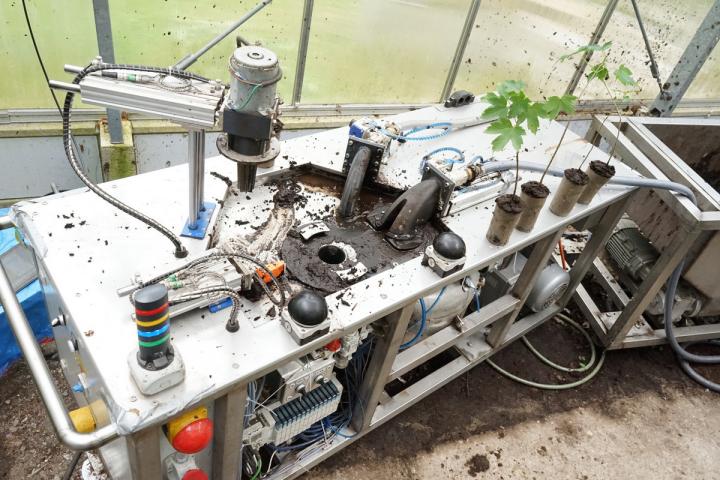
Scientists from the Faculty of Mechanical Engineering of the Czech Technical University in Prague are now working on two projects that will reduce the proportion of manual work and contribute to a better environment. The first addresses a new concept of orchard care using sensor technology, automation, artificial intelligence and robotics. The second project is aimed at preparing the planting of forest trees.
The aim of the project "Wrapping of forest tree planting material with the PostCont technological system" is the development and construction of a functional prototype for semi-automated wrapping of the root system of small trees with a suitable substrate in a suitable protective container. The device first creates a growing container, usually made of recycled paper. The operator then inserts the seedling into the formed container and the apparatus covers its roots with a suitable diluted substrate from which the excess water is drained off in the final stage of seedling preparation. The main investigator of the project, supported by the TAČR agency, projekt/SS01020189, is the Faculty of Forestry and Wood Technology of the Czech University of Life Sciences, which is trying to increase the resistance of seedlings to drought and other adversities. The task of the Institute of Design and Machine Parts of the Faculty of Mechanical Engineering is the structural design of the described device and its development into a really usable form.
Ing. Ondřej Štoček, PhD student at the Faculty of Mechanical Engineering, explains the function of the device. "Currently, my colleagues and I have succeeded in developing a prototype that will allow us to produce packaged, covered-rooted seedlings with a significantly smaller ecological footprint than conventional packaged material. The water used to dilute both the paper pulp and the peat is reused - its total consumption is therefore very low in principle. Waste paper for recycling is used to create the packaging. Technically, the plant consists of two pumps of slurry mixtures of paper pulp and peat and a section that produces and fills a cup-shaped container with a suitable planting medium. We started development in 2020 and I can hopefully say that despite the minor shortcomings identified when the machine was in operation, we have succeeded in our task."
Ing. Martin Baláš from the research station of the Faculty of Forestry and Wood Technology of CULS in Truba near Kostelec nad Černými Lesy, adds: "The equipment saves forest owners a lot of manual work, extends the range of technologies for preparing planting material and is environmentally friendly. When the development is fully completed, we can offer forestry operations a technological system with the advantages of coated planting material. This is because automatic encapsulation is much faster than manual transplanting of seedlings from nurseries and the material can be handled immediately without the risk of the roots becoming loose from the substrate in the root ball and drying out. Another advantage is the possibility of extending planting dates in the forest. It remains to be verified that the machine is actually usable in nursery conditions and that the quality of the planting material - especially its receptivity and initial prosperity in the forest environment - is realistic."



